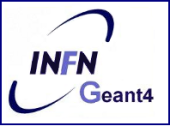Speaker
Dr
Giorgio Russo
(Laboratorio di Tecnologie Oncologiche (LATO) HSR Giglio, Cefalù (PA), Italy)
Description
In the last few years the use of ionising radiation has obtained a relevant role as a remedy for many types of tumour pathologies. Among the different radiation techniques the Intra Operative radiation therapy (IORT) is a new way to treat some tumours [1,2,3,4], consisting of exposing the surrounding involved tissues to a single high radiation dose during surgery after the obliteration of the tumour [5,6,7]. Many studies have highlighted the success of this approach, especially to treat breast lesions. The employment of conventional linear accelerators (linac) needs complex procedures and offers several limitations making very difficult its adoption in terms of time and money [8]. In the last years, a new generation of linac has been developed specifically for the IORT, characterized by limited energy, limited field size, no bending magnet and high mobility. The design of these linacs is optimized for minimal radiation leakage allowing them to be operated in an unmodified surgery room.
Our study is focused on one of these linacs, the NOVAC7 (New Radiant Technology S.p.A.). The aim is to study the dose distribution inside a water phantom changing the dimension and shape of collimators, and the dimension, shape and material of beam stopper generally localized beyond the target in the breast lesion treatments.
The first step of our study is to develop a Monte Carlo application using GEANT4 toolkit to simulate the complex geometry of NOVAC7 and the electron beam characteristics, and to compare the dose distribution in the standard dosimetrical configuration with the experimental data, measured using the linac installed at the LATO HSR Giglio (LAboratorio di Tecnologie Oncologiche) at Cefalù (PA).
[1] Garton G R, Gunderson L L, Webb M J, Wilton T O, Cha S S and Podratz K C, Intraoperative radiation therapy in gynecologic cancer: update of the experience at a single institution, Int. J. Radiat. Oncol. Biol. Phys. 37 893-43 1997
[2] Krempien et al Long-term results of intraoperative presacral electron boost radiotherapy (IOERT) in combination with total mesorectal excision (TME)and chemoradiation in patient with locally advanced rectal cancer Int. J. Radiat. Oncol. Biol. Phys. 66 1143-51 2006
[3] Roeder F et al. Patterns of failure and local control after intraoperative electron boost radiotherapy to the presacral space in combination with the total mesorectal excision in patients with locally advanced rectal cancer Int. J. Radiat. Oncol. Biol. Phys. 67 1381-8 2007
[4] Tran et al Long-term survivors using intraoperative radiotherapy for recurrent gynecologic malignancies Int. J. Radiat. Oncol. Biol. Phys. 69 504-11 2007
[5] R.Orecchia et al. Intraoperative electron beam radiotherapy (ELIOT)to the breast: a need for quality assurance programme , The Breast 14, 541-546 2005
[6] Merrick III HW et al. Future directions in radiation therapy Surg. Oncol. Clin. N. Am. 12, 1099-105 2003
[7] Willet CG et al. Intraoperative radiation therapy Int. J. Clin. Oncol. 6 209-14 2001
[8] Rapporti ISTISAN 03/1 IT
Summary
Many studies about the Intra Operative Radiation Therapy (IORT), a new radiation techniques, have highlighted its success to treat some tumors, especially the breast lesions. Our investigation aims are to study the dose distribution inside a water phantom changing the dimension and shape of collimator, and the dimension, shape and material of beam stopper (generally localized beyond the target in the breast lesion treatment) of linac NOVAC7. We develop a Monte Carlo application using Geant4 toolkit to simulate the complex geometry of the NOVAC7.
Keymords
IORT, Simulation, Monte Carlo, Geant4, Electron beam
| Are you a Memeber of the Geant4 Collaboration (yes/no) | yes |
|---|
Primary author
Dr
Giorgio Russo
(Laboratorio di Tecnologie Oncologiche (LATO) HSR Giglio, Cefalù (PA), Italy)
Co-authors
Dr
Francesco Romano
(Istituto Nazionale di Fisica Nucleare - Laboratori Nazionali del Sud, Catania, Italy)
Dr
Gaetano Arnetta
(Laboratorio di Tecnologie Oncologiche (LATO) HSR Giglio, Cefalù (PA), Italy)
Dr
Giacomo Cuttone
(Istituto Nazionale di Fisica Nucleare - Laboratori Nazionali del Sud, Catania, Italy)
Prof.
Maria Carla Gilardi
(Università degli studi di Milano Bicocca, Milano, Italy)
Dr
Massimo Di Francesco
(New Radiant Technology S.p.A., Aprilia (LT))
Dr
Paola Spiccia
(Laboratorio di Tecnologie Oncologiche (LATO) HSR Giglio, Cefalù (PA), Italy)
Dr
Salvatore Barone
(New Radiant Technology S.p.A., Aprilia (LT))




